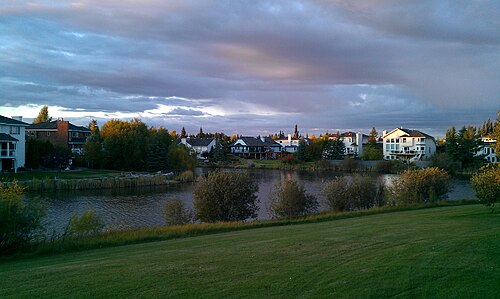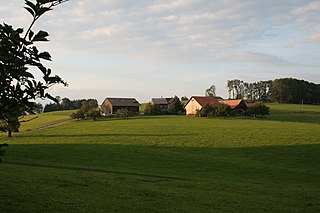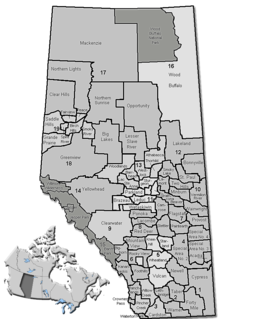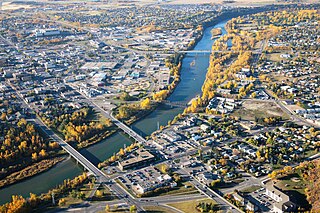| 2012 municipal census summary | 2011 federal census comparison | Previous municipal census comparison |
|---|
| Municipality | Status [6] | Census
date [6] | 2012
pop. [6] | 2011
pop. [7] | Absolute
growth | Absolute
change | Annual
growth
rate | Prev.
pop.
[8] [9] [10] [11] [12] [13] [14] | Prev.
census
year
[8] [9] [10] [11] [12] [13] [14] | Absolute
growth | Annual
growth
rate |
|---|
| Airdrie | City | April 1, 2012 | 7004457110000000000♠45,711 | 7004425640000000000♠42,564 | 7003314700000000000♠3,147 | 7000740000000000000♠7.4% | 7.4% | 7004431550000000000♠43,155 | 2011 | 7003255600000000000♠2,556 | 5.9% |
| Beaumont | Town | May 1, 2012 | 7004139770000000000♠13,977 | 7004132840000000000♠13,284 | 7002693000000000000♠693 | 7000520000000000000♠5.2% | 5.2% | 7004132870000000000♠13,287 | 2011 | 7002690000000000000♠690 | 5.2% |
| Beiseker | Village | | 7002780000000000000♠780 [15] | 7002785000000000000♠785 | 2999500000000000000♠−5 | 3000400000000000000♠−0.6% | −0.6% | 7002837000000000000♠837 | 2008 | 2998430000000000000♠−57 | −1.7% |
| Blackfalds | Town | May 18, 2012 | 7003676700000000000♠6,767 | 7003630000000000000♠6,300 | 7002467000000000000♠467 | 7000740000000000000♠7.4% | 7.4% | 7003639900000000000♠6,399 | 2011 | 7002368000000000000♠368 | 5.8% |
| Bonnyville | Town | May 3, 2012 | 7003683700000000000♠6,837 | 7003621600000000000♠6,216 | 7002621000000000000♠621 | 7001100000000000000♠10% | 10.0% | 7003647000000000000♠6,470 | 2009 | 7002367000000000000♠367 | 1.9% |
| Breton | Village | May 15, 2012 | 7002581000000000000♠581 | 7002496000000000000♠496 | 7001850000000000000♠85 | 7001171000000000000♠17.1% | 17.1% | 7002579000000000000♠579 | 2007 | 7000200000000000000♠2 | 0.1% |
| Bruderheim | Town | April 1, 2012 | 7003129800000000000♠1,298 | 7003115500000000000♠1,155 | 7002143000000000000♠143 | 7001124000000000000♠12.4% | 12.4% | 7003120300000000000♠1,203 | 1990 | 7001950000000000000♠95 | 0.3% |
| Buffalo Lake | Metis settlement | June 4, 2012 | 7002701000000000000♠701 | 7002492000000000000♠492 | 7002209000000000000♠209 | 7001425000000000000♠42.5% | 42.5% | 7003120600000000000♠1,206 | 2009 | 2997495000000000000♠−505 | −16.5% |
| Calgary | City | April 1, 2012 | 7006112022500000000♠1,120,225 | 7006109683300000000♠1,096,833 | 7004233920000000000♠23,392 | 7000210000000000000♠2.1% | 2.1% | 7006109093600000000♠1,090,936 | 2011 | 7004292890000000000♠29,289 | 2.7% |
| Chestermere | Town | May 12, 2012 | 7004153520000000000♠15,352 | 7004148240000000000♠14,824 | 7002528000000000000♠528 | 7000360000000000000♠3.6% | 3.6% | 7004146820000000000♠14,682 | 2011 | 7002670000000000000♠670 | 4.6% |
| Clear Hills County | Municipal district | May 22, 2012 | 7003282900000000000♠2,829 | 7003280100000000000♠2,801 | 7001280000000000000♠28 | 7000100000000000000♠1% | 1.0% | 7003297000000000000♠2,970 | 2008 | 2997859000000000000♠−141 | −1.2% |
| Coalhurst | Town | May 22, 2012 | 7003226900000000000♠2,269 | 7003196300000000000♠1,963 | 7002306000000000000♠306 | 7001156000000000000♠15.6% | 15.6% | 7003195300000000000♠1,953 | 2010 | 7002316000000000000♠316 | 7.8% |
| Cold Lake | City | April 15, 2012 | 7004144000000000000♠14,400 | 7004138390000000000♠13,839 | 7002561000000000000♠561 | 7000410009999999999♠4.1% | 4.1% | 7004139240000000000♠13,924 | 2009 | 7002476000000000000♠476 | 1.1% |
| Consort | Village | May 15, 2012 | 7002722000000000000♠722 | 7002689000000000000♠689 | 7001330000000000000♠33 | 7000480000000000000♠4.8% | 4.8% | 7002696000000000000♠696 | 2000 | 7001260000000000000♠26 | 0.3% |
| East Prairie | Metis settlement | June 4, 2012 | 7002345000000000000♠345 | 7002366000000000000♠366 | 2998790000000000000♠−21 | 2999430000000000000♠−5.7% | −5.7% | 7002906000000000000♠906 | 2009 | 2997439000000000000♠−561 | −27.5% |
| Edgerton | Village | May 1, 2012 | 7002401000000000000♠401 | 7002317000000000000♠317 | 7001840000000000000♠84 | 7001265000000000000♠26.5% | 26.5% | 7002393000000000000♠393 | 2007 | 7000800000000000000♠8 | 0.4% |
| Edmonton | City | April 1, 2012 | 7005817498000000000♠817,498 | 7005812201000000000♠812,201 | 7003529700000000000♠5,297 | 6999700000000000000♠0.7% | 0.7% | 7005782439000000000♠782,439 | 2009 | 7004350590000000000♠35,059 | 1.5% |
| Edson | Town | May 31, 2012 | 7003864600000000000♠8,646 | 7003847500000000000♠8,475 | 7002171000000000000♠171 | 7000200000000000000♠2% | 2.0% | 7003836500000000000♠8,365 | 2005 | 7002281000000000000♠281 | 0.5% |
| Elizabeth | Metis settlement | June 4, 2012 | 7002671000000000000♠671 | 7002654000000000000♠654 | 7001170000000000000♠17 | 7000260000000000000♠2.6% | 2.6% | 7002820000000000000♠820 | 2009 | 2997851000000000000♠−149 | −6.5% |
| Elk Point | Town | April 18, 2012 | 7003157100000000000♠1,571 | 7003141200000000000♠1,412 | 7002159000000000000♠159 | 7001113000000000000♠11.3% | 11.3% | 7003151200000000000♠1,512 | 2007 | 7001590000000000000♠59 | 0.8% |
| Fishing Lake | Metis settlement | June 4, 2012 | 7002425000000000000♠425 | 7002436000000000000♠436 | 2998890000000000000♠−11 | 2999750000000000000♠−2.5% | −2.5% | 7002952000000000000♠952 | 2009 | 2997473000000000000♠−527 | −23.6% |
| Fort Saskatchewan | City | April 30, 2012 | 7004204750000000000♠20,475 | 7004190510000000000♠19,051 | 7003142400000000000♠1,424 | 7000750000000000000♠7.5% | 7.5% | 7004186530000000000♠18,653 | 2010 | 7003182200000000000♠1,822 | 4.8% |
| Gift Lake | Metis settlement | June 4, 2012 | 7002791000000000000♠791 | 7002662000000000000♠662 | 7002129000000000000♠129 | 7001195000000000000♠19.5% | 19.5% | 7003111500000000000♠1,115 | 2010 | 2997676000000000000♠−324 | −15.8% |
| Hughenden | Village | May 5, 2012 | 7002258000000000000♠258 | 7002230000000000000♠230 | 7001280000000000000♠28 | 7001122000000000000♠12.2% | 12.2% | 7002266000000000000♠266 | 2008 | 2999200000000000000♠−8 | −0.8% |
| Innisfail | Town | May 1, 2012 | 7003792200000000000♠7,922 | 7003787600000000000♠7,876 | 7001460000000000000♠46 | 6999600000000000000♠0.6% | 0.6% | 7003788300000000000♠7,883 | 2009 | 7001390000000000000♠39 | 0.2% |
| Kapasiwin | Summer village | June 19, 2012 | 7001140000000000000♠14 | 7001100000000000000♠10 | 7000400000000000000♠4 | 7001400000000000000♠40% | 40.0% | 7001140000000000000♠14 | 2011 | 5000000000000000000♠0 | 0.0% |
| Kikino | Metis settlement | June 4, 2012 | 7002810000000000000♠810 | 7002964000000000000♠964 | 2997846000000000000♠−154 | 2998840000000000000♠−16% | −16.0% | 7003111300000000000♠1,113 | 2009 | 2997697000000000000♠−303 | −10.1% |
| Leduc | City | April 30, 2012 | 7004254820000000000♠25,482 | 7004242790000000000♠24,279 | 7003120300000000000♠1,203 | 7000500000000000000♠5% | 5.0% | 7004241390000000000♠24,139 | 2011 | 7003134300000000000♠1,343 | 5.6% |
| Lethbridge | City | April 1, 2012 | 7004890740000000000♠89,074 | 7004835170000000000♠83,517 | 7003555700000000000♠5,557 | 7000670000000000000♠6.7% | 6.7% | 7004878820000000000♠87,882 | 2011 | 7003119200000000000♠1,192 | 1.4% |
| Medicine Hat | City | June 1, 2012 | 7004611800000000000♠61,180 | 7004600050000000000♠60,005 | 7003117500000000000♠1,175 | 7000200000000000000♠2% | 2.0% | 7004610970000000000♠61,097 | 2009 | 7001830000000000000♠83 | 0.0% |
| Okotoks | Town | May 24, 2012 | 7004249620000000000♠24,962 | 7004245110000000000♠24,511 | 7002451000000000000♠451 | 7000180000000000000♠1.8% | 1.8% | 7004239810000000000♠23,981 | 2011 | 7002981000000000000♠981 | 4.1% |
| Oyen | Town | June 8, 2012 | 7003107000000000000♠1,070 | 7002973000000000000♠973 | 7001970000000000000♠97 | 7001100000000000000♠10% | 10.0% | 7003119000000000000♠1,190 | 2009 | 2997880000000000000♠−120 | −3.5% |
| Paddle Prairie | Metis settlement | June 4, 2012 | 7002464000000000000♠464 | 7002562000000000000♠562 | 2998020000000000000♠−98 | 2998826009999900000♠−17.4% | −17.4% | 7003108900000000000♠1,089 | 2009 | 2997375000000000000♠−625 | −24.8% |
| Peavine | Metis settlement | June 4, 2012 | 7002651000000000000♠651 | 7002690000000000000♠690 | 2998610000000000000♠−39 | 2999430000000000000♠−5.7% | −5.7% | 7002905000000000000♠905 | 2009 | 2997746000000000000♠−254 | −10.4% |
| Penhold | Town | June 1, 2012 | 7003247600000000000♠2,476 | 7003237500000000000♠2,375 | 7002101000000000000♠101 | 7000430000000000000♠4.3% | 4.3% | 7003232200000000000♠2,322 | 2010 | 7002154000000000000♠154 | 3.3% |
| Raymond | Town | May 15, 2012 | 7003389100000000000♠3,891 | 7003374300000000000♠3,743 | 7002148000000000000♠148 | 7000400000000000000♠4% | 4.0% | 7003386400000000000♠3,864 | 2011 | 7001270000000000000♠27 | 0.7% |
| Redwater | Town | May 16, 2012 | 7003211600000000000♠2,116 | 7003191500000000000♠1,915 | 7002201000000000000♠201 | 7001105000000000000♠10.5% | 10.5% | 7003212000000000000♠2,120 | 2000 | 2999600000000000000♠−4 | 0.0% |
| Rocky Mountain House | Town | June 19, 2012 | 7003730000000000000♠7,300 | 7003693300000000000♠6,933 | 7002367000000000000♠367 | 7000530000000000000♠5.3% | 5.3% | 7003723100000000000♠7,231 | 2007 | 7001690000000000000♠69 | 0.2% |
| Rosemary | Village | May 14, 2012 | 7002421000000000000♠421 | 7002342000000000000♠342 | 7001790000000000000♠79 | 7001231000000000000♠23.1% | 23.1% | 7002311000000000000♠311 | 1981 | 7002110000000000000♠110 | 1.0% |
| Silver Sands | Summer village | May 1, 2012 | 7002154000000000000♠154 | 7001850000000000000♠85 | 7001690000000000000♠69 | 7001812000000000000♠81.2% | 81.2% | 7001720000000000000♠72 | 1982 | 7001820000000000000♠82 | 2.6% |
| South View | Summer village | May 1, 2012 | 7001760000000000000♠76 | 7001350000000000000♠35 | 7001410000000000000♠41 | 7002117100000000000♠117.1% | 117.1% | 7001330000000000000♠33 | 1981 | 7001430000000000000♠43 | 2.7% |
| Spring Lake | Village | May 1, 2012 | 7002614000000000000♠614 | 7002533000000000000♠533 | 7001810000000000000♠81 | 7001152000000000000♠15.2% | 15.2% | 7002592000000000000♠592 | 2007 | 7001220000000000000♠22 | 0.7% |
| St. Albert | City | April 2, 2012 [16] | 7004609940000000000♠60,994 [16] | 7004614660000000000♠61,466 | 2997528000000000000♠−472 | 3000199999999999999♠−0.8% | −0.8% | 7004601380000000000♠60,138 | 2010 | 7002856000000000000♠856 | 0.7% |
| St. Paul | Town | May 15, 2012 | 7003584400000000000♠5,844 | 7003540000000000000♠5,400 | 7002444000000000000♠444 | 7000820009999999999♠8.2% | 8.2% | 7003563200000000000♠5,632 | 2010 | 7002212000000000000♠212 | 1.9% |
| St. Paul No. 19 County of St. Paul No. 19 | Municipal district | April 1, 2012 | 7003616800000000000♠6,168 | 7003583100000000000♠5,831 | 7002337000000000000♠337 | 7000580000000000000♠5.8% | 5.8% | 7003635200000000000♠6,352 | 1984 | 2997816000000000000♠−184 | −0.1% |
| Strathcona County | Specialized municipality | May 1, 2012 [17] | 7004924030000000000♠92,403 [17] | 7004924900000000000♠92,490 | 2998130000000000000♠−87 | 3000900000000000000♠−0.1% | −0.1% | 7004879980000000000♠87,998 | 2009 | 7003440500000000000♠4,405 | 1.6% |
| Strathmore | Town | April 1, 2012 | 7004123520000000000♠12,352 | 7004123050000000000♠12,305 | 7001470000000000000♠47 | 6999400000000000000♠0.4% | 0.4% | 7004121390000000000♠12,139 | 2010 | 7002213000000000000♠213 | 0.9% |
| Sundre | Town | June 7, 2012 | 7003269500000000000♠2,695 | 7003261000000000000♠2,610 | 7001850000000000000♠85 | 7000330000000000000♠3.3% | 3.3% | 7003219000000000000♠2,190 | 1999 | 7002505000000000000♠505 | 1.6% |
| Thorsby | Village | April 1, 2012 | 7002947000000000000♠947 | 7002951000000000000♠951 | 2999600000000000000♠−4 | 3000600000000000000♠−0.4% | −0.4% | 7002988000000000000♠988 | 2010 | 2998590000000000000♠−41 | −2.1% |
| Three Hills | Town | April 2, 2012 | 7003323000000000000♠3,230 | 7003319800000000000♠3,198 | 7001320000000000000♠32 | 7000100000000000000♠1% | 1.0% | 7003332200000000000♠3,322 | 2008 | 2998080000000000000♠−92 | −0.7% |
| Two Hills | Town | May 7, 2012 | 7003143100000000000♠1,431 | 7003137900000000000♠1,379 | 7001520000000000000♠52 | 7000380000000000000♠3.8% | 3.8% | 7003123200000000000♠1,232 | 2007 | 7002199000000000000♠199 | 3.0% |
| Vegreville | Town | April 1, 2012 | 7003575800000000000♠5,758 | 7003571700000000000♠5,717 | 7001410000000000000♠41 | 6999700000000000000♠0.7% | 0.7% | 7003583400000000000♠5,834 | 2009 | 2998240000000000000♠−76 | −0.4% |
| Vermilion | Town | April 15, 2012 | 7003454500000000000♠4,545 | 7003393000000000000♠3,930 | 7002615000000000000♠615 | 7001156000000000000♠15.6% | 15.6% | 7003447200000000000♠4,472 | 2007 | 7001730000000000000♠73 | 0.3% |
| Vilna | Village | June 18, 2012 | 7002290000000000000♠290 | 7002249000000000000♠249 | 7001410000000000000♠41 | 7001165000000000000♠16.5% | 16.5% | 7002302000000000000♠302 | 1998 | 2998880000000000000♠−12 | −0.3% |
| Vulcan County | Municipal district | April 4, 2012 | 7003389300000000000♠3,893 | 7003387500000000000♠3,875 | 7001180000000000000♠18 | 6999500000000000000♠0.5% | 0.5% | 7003383000000000000♠3,830 | 2007 | 7001630000000000000♠63 | 0.3% |
| Wembley | Town | April 15, 2012 | 7003141000000000000♠1,410 | 7003138300000000000♠1,383 | 7001270000000000000♠27 | 7000200000000000000♠2% | 2.0% | 7003154200000000000♠1,542 | 2001 | 2997868000000000000♠−132 | −0.8% |
| Wood Buffalo RM of Wood Buffalo | Specialized municipality | May 9, 2012 | 7004746310000000000♠74,631 [18] | 7004655650000000000♠65,565 | 7003906600000000000♠9,066 | 7001138000000000000♠13.8% | 13.8% | 7004667480000000000♠66,748 | 2007 | 7003788300000000000♠7,883 | 2.3% |
| Yellowstone | Summer village | May 1, 2012 | 7002131000000000000♠131 | 7002178000000000000♠178 | 2998530000000000000♠−47 | 2998736009999900000♠−26.4% | −26.4% | 7001970000000000000♠97 | 1992 | 7001340000000000000♠34 | 1.5% |
|



















